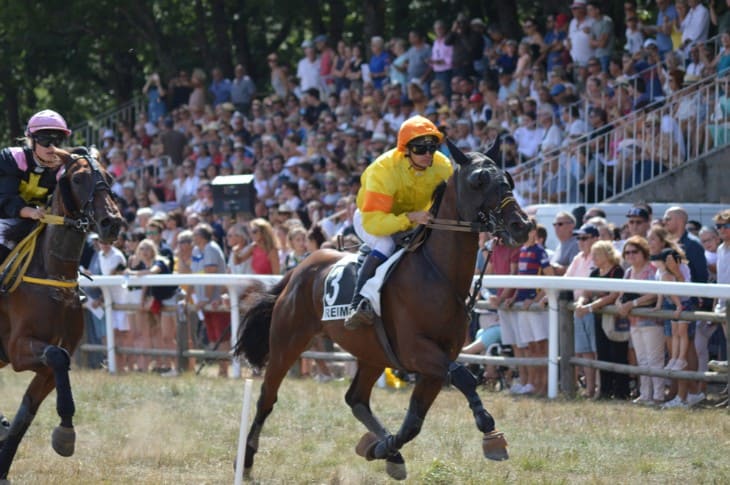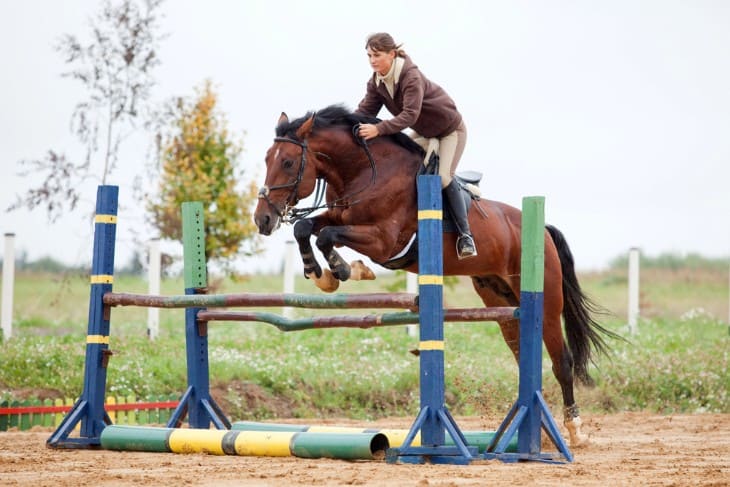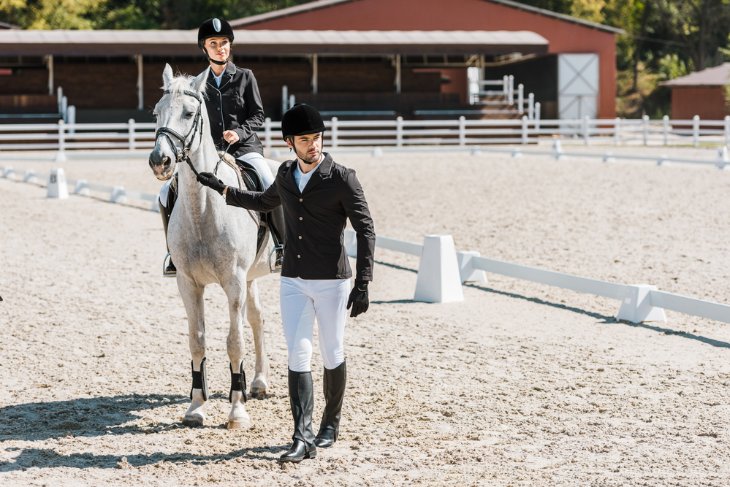- Exploring the Issue of Gender Equality in Horse Racing
- Men's Historical Dominance in Horse Racing
- Smashing Stereotypes: The Emergence of Female Jockeys
- Current Problems that Women Face in Horse Racing
- Influence of the Media
- Societal Mindsets and Cultural Expectations
- A Vision for an All-Inclusive Future
- Achievements and figures that inspire
- The Bottom Line
Exploring the Issue of Gender Equality in Horse Racing
Horse racing is a worldwide sport with a rich history, but men have always dominated it. However, with changing societal norms comes an acceptance by the racing community of gender equality. This change is essential for the sport's growth and for creating an inclusive environment that values talent over sex.
Men's Historical Dominance in Horse Racing
For many years now, horse racing has been held by men. The jockeys were predominantly male and had been so since time immemorial, which shaped what this game became and how people saw it. Women encountered enormous challenges trying to be recognised or given any opportunities within such a male-dominated sphere; unfortunately, even though times changed, they still sometimes reflected broader social norms, excluding them from competing with their counterparts at higher levels like training or decision-making positions.
This was simply a continuation of the status quo as things developed within this field; even with its evolution, there were many barriers in place for aspiring female riders who had to battle deep-rooted stereotypes questioning their physical strength or ability to withstand rigours associated with horse racing which not only damaged these women but also acted against progress being made towards achieving gender equality in sports generally — thus making ladies involvement something exceptional rather than normality for years on end.
However, as society began challenging traditional roles around sex, so too did things start shifting here – increasingly, we see more races where females take part, though visibility remains low overall when compared against male riders.

Smashing Stereotypes: The Emergence of Female Jockeys
Recent times have witnessed an upsurge in numbers concerning girls joining professional riding ranks, thereby breaking through long-held beliefs attached to gender biases prevalent across equestrianism. Michelle Payne represents one such lady who has become symbolic as an individual achiever within her discipline and a catalyst for wide-ranging transformations inside and outside.
Michelle Payne made history after she became the first ever lady jockey to win the Melbourne Cup; this victory did not only challenge certain chauvinistic attitudes prevalent within horse racing itself but also across its wider society by openly criticising these views while demanding equal opportunities for all women.
What we are seeing now with female jockeys is that they have proved that in racing the brain beats brawn. The triumphs of ladies involved in this sport have led to a change in perception, such that even small girls can consider it a career path because they know other females like them succeed at the highest levels possible.
The success achieved by young women participating in and excelling in major competitions ridden on Equus caballus back has inspired future generations who may want to follow suit, especially considering how many records continue to be broken every year by individuals from various countries representing diverse backgrounds.
More women entering into horse racing will transform everything about it. This means there will be more fairness when evaluating talent regardless of whether one is male or female, thus doing away with the belief systems around sex-based roles which have always favoured men in these events.
Also another thing worth noting is that with each record broken, we get closer towards eliminating myths about horse racing being dominated by males always, paving the way for an increased number of participants both locally and internationally across different ages, genders, and ethnicities.
Current Problems that Women Face in Horse Racing
- Opportunities Limited to High-Paying Races: Women jockeys have fewer opportunities than men to participate in races that pay well. This restriction is not only a matter of personal choice on the part of owners and trainers but also reflects deeper structural problems within the industry. Typically, males are preferred for more profitable competitions, creating a cycle where female riders struggle to prove themselves on bigger stages.
- Securing Sponsorships: Getting sponsorships is another major obstacle faced by female jockeys. These deals are important because they provide financial support as well as chances for increased visibility in a rider's career. However, such agreements seem biassed towards males due to media representation and traditional perception of corporate sponsors. Inequality in sponsorship affects women's economic stability and their ability to compete at higher levels.
- Media Representation and Bias: The media plays a significant role in determining what people think about horse racing and who succeeds therein. There usually needs more coverage leaning towards male jockeys, with many interviews, features, and endorsements directed at them. This distorted representation by the media reinforces gender roles while at the same time limiting the number of times ladies can be seen riding horses professionally. Even though social networks offer them platforms onto which they can share successes directly with fans, mainstream media still has greater power over public opinion regarding careers in sports like racing.
- Social and Cultural Barriers: Stereotypes and cultural norms continue to impede progress made by women involved with horse racing as professional jockeys. Some still believe that ladies are physically or mentally incapable of handling strategic aspects associated with competitive riding, unlike their male counterparts, who dominate most sections within the sector globally. Such societal attitudes determine everything from who gets the opportunity to how these individuals should be treated while participating in this discipline. Challenging these stereotypes requires concerted efforts towards education and advocacy for gender equality within the racing community and beyond.
All these challenges are part of the broader context in which women are forced to overcome various impediments if they want to succeed in horse racing. Such issues must be addressed to make the sport more inclusive and fair for all participants.
Influence of the Media
The media is a powerful tool that can be used to shape public opinion and career opportunities within horse racing. Male jockeys receive the bulk of interviews, feature stories, and endorsements from the press corps; this bias reflects and perpetuates gender norms prevalent in society and the sport itself. These practices by media organisations stifle recognition and visibility for female riders – both necessary elements for advancing their professional development or attracting sponsors.
Amidst these difficulties women face in horse racing due to lopsided media representation, there are signs of hope brought about by social media. With platforms such as Facebook, Instagram, etc., female jockeys now have an avenue where they can share their successes with thousands if not millions, while also interacting directly with supporters who might never have been exposed under traditional circumstances. But this shift remains marginal since mainstream outlets dominate both coverage and influence over career paths available within the industry, affecting public perception of sponsorship decisions, too.
For things to change significantly towards achieving fairer representations through various channels requires collective effort among stakeholders involved in horse racing business enterprises: those running racing clubs should take into account equal opportunities policies when awarding broadcasting contracts; sponsors need to support sports women equally like sportsmen; journalists ought to cover events involving women athletes just as they would do men’s games otherwise there won’t be growth for any game because people will feel excluded from them thus not deserving support at all.
Societal Mindsets and Cultural Expectations
In horse racing, societal mindsets and cultural expectations are responsible for most of the challenges and opportunities female jockeys face. For a long time, this sport has been considered a male-dominated discipline, with gender roles determining who can take part or succeed in it. Many people still think women cannot handle racing because they have weaker physical strength than men, while others doubt the strategic skills necessary for winning races.
It is essential to try changing these cultural norms to achieve gender equality in horse racing. This can be done by enlightening members within the industry and the general public about what female athletes have accomplished so far and what they can achieve when given equal chances with their male counterparts. The fact that some women have succeeded in this field should serve as an eye-opener, proving beyond any reasonable doubt that ladies, too, possess the required competence levels just like their opposite-sex partners do while participating in such events.
Besides celebrating achievements made by the womenfolk, there should be deliberate efforts to promote policies that foster fairness among all participants regardless of one's sex or gender identity within racing game-changer culture. It may take quite some time before people get used to new ways. Still, eventually, it will help create an inclusive environment where everyone feels valued and appreciated regardless of their background.

A Vision for an All-Inclusive Future
- Encouraging Women's Participation: The future vision aims to have more females involved in horse racing activities, not only as riders but also as trainers, managers, or even holding top leadership positions within these establishments. Different perspectives need to be considered to achieve growth and innovativeness within such a sector, thus creating a more comprehensive range through which talents may emanate.
- Equitable Practices on Scheduling Races And Distributing Prizes: Another significant concern for achieving an all-inclusive future lies in adopting fairer systems regarding race scheduling and prize allocations. It is necessary to ensure that all individuals get equal opportunities to participate in high-profile races while receiving the same amount of money. This will level the playing field, thereby showing industry players' commitment to gender fairness.
- Supportive Policies coupled with Respectful Atmosphere: Aiming to foster harmony among different genders also involves creating supportive environments where policies promote equality and recognise and appreciate contributions made by female jockeys or trainers within the racing fraternity. Through such an atmosphere, more women can be encouraged to join and remain active participants in various sports, knowing very well that their hard work is being acknowledged and valued equally, just like men do receive such rewards.
- Representation in Media And Sponsorships: For the public perception of these athletes to change positively, there should be increased media representation for them, together with the sponsorship of more events in which they participate. How media outlets cover stories concerning sporting activities dramatically influences how people perceive those involved. This, therefore, calls upon journalists to ensure balanced coverage between male and female jockey profiles so as not only to create awareness but also to give rise to opportunities for further growth among ladies who have a passion for riding horses competitively.
All these aspects form part of a more expansive view whereby the horse racing industry adapts and advocates principles to enhance gender parity. This dream should not only be seen as a means of making things fairer within the game itself; it should also serve the better interests of every individual connected with sport, thus showcasing its real nature based on healthy competition accompanied by excellence.
Achievements and figures that inspire
- Michelle Payne's Historic Win: Among the most renowned success stories in horse racing is Michelle Payne's victory. In 2015, she won the Melbourne Cup, which made her the first-ever woman jockey to win such a prestigious race. Her triumph was personal and challenged gender stereotypes within the game itself. Payne used her win to speak against male chauvinism in horse racing, inspiring many women while highlighting the need for change in the sport.
- Hayley Turner's Barrier-Breaking Achievements: Another inspirational figure from this industry is Hayley Turner, who broke barriers along her career path as a professional jockey rider. She achieved this by being declared winner of a Group One race outright in Britain, thus becoming the world record holder for being the first female jockey ever to do so. She demonstrated exceptional skills on tracks and opened doors for other girls interested in joining a racing fraternity, thereby changing people's views towards women's participation.
- Julie Krone's Record-Setting Career: Julie Krone is an American retired female horse racing champion known all over America and beyond because of what she achieved during her active days. No other lady has ever had as much success in this field as Julie has, recording massive earnings and winning several awards.
These success stories are not just about individual triumphs; they symbolise the broader progress towards gender equality in horse racing. Each of these women has not only achieved personal milestones but has also contributed to changing the landscape of the sport, making it more inclusive and diverse. Their stories inspire future generations of female jockeys to pursue their dreams in horse racing, knowing that success is possible.
The Bottom Line
Gender equality in horse racing is more than necessary; it reflects the broader societal changes towards inclusivity and fairness. While there are significant challenges to overcome, the progress made by female jockeys and the shifting perceptions about their roles and capabilities are promising signs. As the industry continues to evolve, it holds the potential to reflect and lead in the pursuit of gender equality in sports. The path forward involves continued advocacy, support, and structural changes to ensure horse racing becomes a sport where talent knows no gender.








